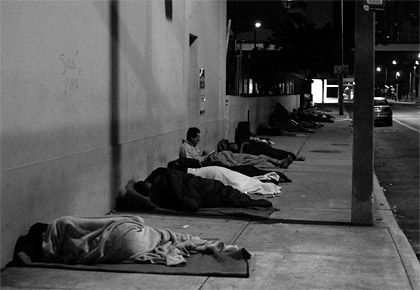Homelessness prevention is a set of strategies to help low-income households resolve a housing crisis that would otherwise lead to homelessness. A prevention program may stabilize a household in their current housing or help them to move into new housing without first entering shelter or experiencing homelessness. Strategies may include financial assistance, legal assistance, housing stabilization services, and other interventions used singularly or in combination. The more coordinated and well-targeted the prevention program is the more likely it is to reduce the number of people who experience homelessness.
Problem or Challenge:
Ending homelessness requires effective and well-targeted strategies to stop families and individuals from becoming homeless. Most people can successfully avoid homelessness if they get the right help at the right time. A small amount of assistance is often enough to prevent an episode of homelessness and the cost of prevention is usually much less than the cost of shelter and other services people need when they experience homelessness. Prevention diminishes the trauma and dislocation caused by homelessness. When effective, homelessness prevention programs reduce the demand for homeless shelters.
Solution:
As part of a community’s homelessness assistance system, prevention programs serve vulnerable individuals and families who are at imminent risk of becoming homeless (i.e., entering shelter or transitional housing or living in cars or on the street). The goal is to help the household resolve their crisis, secure short-term financial or rental assistance as needed, and access ongoing sources of support in the community in order to remain housed. If the individual or family is unable to stay in their existing housing, the prevention program helps the household to find a safe, reasonably affordable and adequate, alternative housing arrangement.
Homelessness prevention programs are usually designed to use available resources to offer time-limited assistance to a large number of families and individuals. The assistance may not be enough to cover all needs, but can often act as a means to leverage other income and supports and permit the recipients to remain housed. In some cases a homelessness prevention program is structured to provide deeper assistance to a defined population, such as persons being discharged from prisons, hospitals, or foster care, to prevent them from experiencing homelessness.
Time-limited homelessness prevention programs are not the only way to prevent homelessness. Some long-term interventions have demonstrated effectiveness in reducing the likelihood that families and individuals with significant needs will enter or return to homelessness. Rental housing assistance is the most direct and effective tool to prevent homelessness; it has been shown to be highly effective in helping people with extremely low incomes retain housing. For households with long histories of homelessness and the greatest barriers to stability, permanent supportive housing has proven effective in preventing returns to homelessness.



